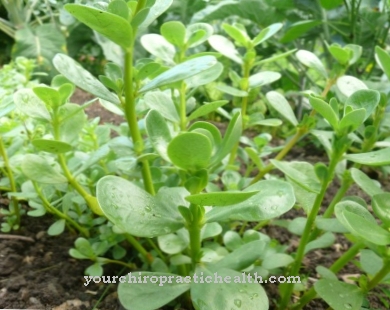Occurrence and cultivation of the cinquefoil

The cinquefoil should be sown in spring. The herb can be planted in the frost-free period of the following year. The cinquefoil is a perennial herbaceous plant. It reaches a height of up to 80 centimeters, with the minimum growth height being 20 centimeters. The stem stands upright and is usually stiff and stable. It is leafy and branched in the upper area. Long hairs surround the stem, with short bristle hairs in between.
In the upper part of the stem of the cinquefoil is hairy glandular. The leaves are arranged alternately and divided into leaf blade and stalk. The leaves are lanceolate, but can also take on an egg shape. Their edges are often strongly sawn and their length is between three and eight centimeters. Similar to the stem, the leaves are dense and hairy long. For that they are not felty. The cinquefoil also has stipules.
The herb is in bloom between May and September, with the inflorescence terminal and panicley. The flowers are hermaphroditic and have a diameter of 20 to 25 millimeters. They are fivefold and radially symmetrical. The outer sepals enlarge over time to up to twelve centimeters. They are slightly longer than the normal sepals. The high cinquefoil has triangular and pointed sepals - five in number - while the five petals are pale yellow or golden yellow in color and are heart-shaped.
The seeds develop from the flowers in late late summer. The chromosome number of the cinquefoil is 2n = 28, 25 or 42. It was originally common in Southeast Europe, Central Asia, and Southwest Asia. It is currently found in Europe and is located in western Spain. It also grows in the northern hemisphere as far as Scandinavia as well as in the entire Mediterranean region, Africa, Iran and Anatolia. In addition, the cinquefoil spreads further to Central, Western and Northern Europe.
In Germany it is a rather rare adventitious plant. Preferred locations for the plant are base-rich and dry areas such as rudderal grass areas, cave pits and parks. However, it can also be found on railway and flood dams.
Occurrence & cultivation
Basically, the cinquefoil does not play an important role as a medicinal plant. Nevertheless, it is used for various complaints. The reason for its use are the ingredients of the herb. It contains flavonoids, tannins, triterpenes and fatty acids. In particular, flavonoids and tannins are often found in medicinal plants. The medicinal herb can be used internally or externally as a tea, poultice or mouthwash.
To make cinquefoil tea, add 250 milliliters of boiling water to a teaspoon of the roots. After five minutes of pulling, the whole thing can be strained. The tea can be drunk after a short cooling period. It should not be sweetened in order to preserve the active ingredients as best as possible. The tea can also be used for gargling. It helps against discomfort in the oral cavity. The leaves can also be crushed.
The resulting juice has a healing effect. A poultice made from the mass can be placed on the skin to treat skin diseases or wounds that are difficult to heal. What is problematic, however, is the promotion of scarring. This effect is also caused by the ingredients of the cinquefoil. This side effect is one reason for the rare use of the plant.
The seeds of the cinquefoil used to be used as food in times of need. Today the plant can be found as an ornamental plant in gardens. The finger herbs were already used as a medicinal plant in the Middle Ages and ancient times. This is evident from various preserved records.
Importance for health, treatment & prevention
The main uses of the cinquefoil are wounds and diarrhea. Since there are now various plants in medicine that have no side effects, they are hardly used for wound healing anymore. All in all, gargling with cinquefoil tea can help relieve inflammation in the mouth and relieve inflammation of the gums.
The tea is said to help against diarrhea and combat discomfort in the intestinal area. This is related to the constipating effect of the cinquefoil. The herb has antidiarrheal, antibacterial and hemostatic (astringent) effects at the same time. It's also anti-inflammatory and antioxidant. In addition to bacteria, the cinquefoil also fights viruses and is immune-stimulating. The tea has a positive effect on the body's defenses.
Nevertheless, the application should be discussed with a naturopath or doctor. Medicinal plants often interact with other drugs or plants. In addition, a doctor should be consulted anyway if the symptoms persist. Self-treatment for prolonged diarrhea or inflamed wounds is not recommended.
























.jpg)



